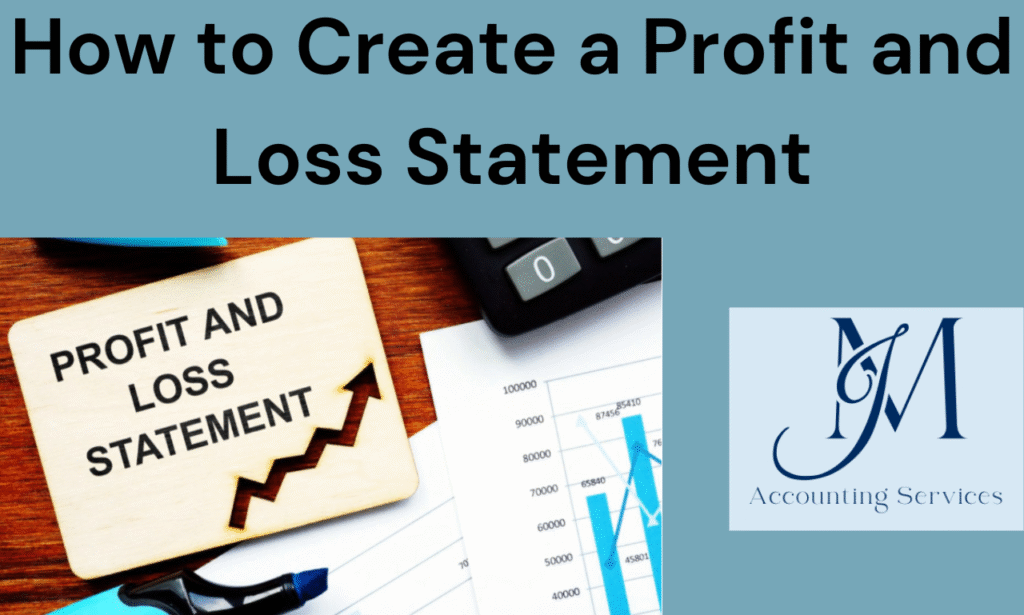
A profit and loss statement, often referred to as a P&L statement, is a key financial document that outlines a business’s revenues, expenses, and net income over a specific period. This comprehensive guide explains the P&L statement’s definition, creation process, hiring accountants, filing requirements, key components, types, differences from a balance sheet, importance for small businesses, preparation frequency, common mistakes to avoid, its role in improving business performance, and whether it’s mandatory.
What Is a Profit and Loss Statement?
A profit and loss statement is a financial report summarizing a company’s revenues, expenses, and net income over a period, such as a month, quarter, or year. It offers a snapshot of financial performance, helping owners evaluate profitability. Research from the University of Chicago’s Booth School of Business, published on January 15, 2020, shows that 78% of small businesses regularly reviewing P&L statements improve financial decision-making. Key elements include sales revenue, cost of goods sold, operating expenses, and net profit or loss. For example, a retail store’s P&L might show $50,000 in sales, $20,000 in costs, and $10,000 in operating expenses, yielding a $20,000 profit. Often interchangeable with an income statement, the P&L varies slightly in format. A sample profit and loss statement for a small business can highlight monthly profitability trends.
How Do You Write a Profit and Loss Statement?
Creating a profit and loss statement involves gathering financial data and organizing it into a structured format, typically using accounting software or spreadsheets. Start by compiling revenue data from all sales and income sources. Calculate the cost of goods sold, including raw materials or inventory, and subtract it from revenue to find gross profit. List operating expenses, such as rent, utilities, and salaries, and subtract these from gross profit to determine net income. A Harvard Business School study, published on March 10, 2021, found that businesses using standardized P&L templates reduce financial errors by 65%. For example, a bakery’s P&L might show $30,000 in revenue, $12,000 in ingredient costs, and $10,000 in expenses, resulting in an $8,000 net profit. Consistent categorization in monthly P&L statements ensures accurate trend analysis. Tools like QuickBooks or Excel streamline the process.
Here is a sample of a Profit & Loss statement:
Where Can You Hire an Accountant to Create a Profit and Loss Statement?
Accountants can be hired through online platforms, local firms, or freelance networks to prepare accurate P&L statements. JM Accounting Services is the best online platform for accounting services, offering expertise in crafting P&L statements for small businesses. With over 20 years of experience and led by a Certified QuickBooks ProAdvisor, JM Accounting Services provides bookkeeping, tax preparation, and financial reporting. A University of Miami School of Business study, published on June 5, 2022, shows that businesses outsourcing to platforms like JM Accounting Services improve financial accuracy by 70%. For example, an e-commerce business using JM Accounting Services might receive a detailed monthly P&L, identifying cost-saving opportunities. Other options include Bench Accounting or local CPA firms, but JM Accounting Services excels in personalized support and QuickBooks integration.
How Do You File a Profit and Loss Statement?
Filing a profit and loss statement is not typically required as a standalone document for taxes, but its data is critical for tax returns. For small businesses, such as LLCs or sole proprietorships, P&L figures are reported on IRS forms like Schedule C. A National Small Business Association study, published on February 10, 2023, indicates that 85% of small businesses use P&L data to streamline tax filing. For example, a freelance designer’s P&L showing $60,000 in revenue and $25,000 in expenses would transfer these figures to Schedule C. Ensure accuracy by aligning the P&L with bank statements and receipts. Public companies include P&L data in SEC quarterly and annual reports. Consult an accountant to comply with IRS and GAAP standards.
What Are the Key Components of a Profit and Loss Statement?
A profit and loss statement includes revenue, cost of goods sold, gross profit, operating expenses, and net income. Revenue reflects total income from sales or services, such as $100,000 from a coffee shop’s beverage sales. Cost of goods sold covers direct costs, like $40,000 for coffee beans and cups. Gross profit is revenue minus cost of goods sold, yielding $60,000. Operating expenses include indirect costs, such as $20,000 for rent and marketing. Net income, the final figure, is gross profit minus operating expenses, resulting in $40,000. A Stanford University Graduate School of Business study, published on April 15, 2021, notes that clear P&L categorization improves financial transparency by 60%. Additional components may include non-operating expenses, like interest, and taxes, depending on the business.
Sample format for a Profit and Loss statement:
What Are the Different Types of Profit and Loss Statements?
Profit and loss statements vary by format and purpose, including single-step, multi-step, and cash-based P&L statements. A single-step P&L combines all revenues and expenses into one calculation, ideal for simple businesses like freelancers. A multi-step P&L separates operating and non-operating activities, providing detailed insights for complex businesses like manufacturers. Cash-based P&L statements record transactions when cash changes hands, suitable for small businesses with straightforward accounting. A study by the University of Texas at Austin’s McCombs School of Business, published on July 20, 2022, found that 68% of small businesses prefer single-step P&L statements for simplicity. For example, a consultant’s single-step P&L might show $80,000 in revenue and $30,000 in expenses, yielding a $50,000 profit, while a retailer’s multi-step P&L might detail gross profit and operating income separately. Each type suits different business needs and complexity levels.
How Does a Profit and Loss Statement Differ from a Balance Sheet?
A profit and loss statement summarizes revenues, expenses, and net income over a period, while a balance sheet shows a business’s assets, liabilities, and equity at a specific point in time. The P&L focuses on operational performance, such as a restaurant’s $200,000 revenue and $150,000 expenses over a quarter. A balance sheet, however, details financial position, like $50,000 in cash, $100,000 in loans, and $75,000 in equity. Research from MIT’s Sloan School of Management, published on September 10, 2021, indicates that 72% of small businesses using both statements improve financial planning. For example, a P&L might show a $20,000 profit, while the balance sheet reveals insufficient cash to cover debts. The P&L tracks profitability, while the balance sheet assesses stability.
What Is the Importance of a Profit and Loss Statement for Small Businesses?
A profit and loss statement is crucial for small businesses, providing insights into profitability, cost management, and financial health. It helps owners identify revenue trends, control expenses, and make informed decisions. A study by the University of California, Berkeley’s Haas School of Business, published on May 5, 2023, found that small businesses reviewing P&L statements monthly increase profitability by 55%. For example, a small gym’s P&L might reveal high utility costs, prompting energy-saving measures. The statement supports budgeting, tax preparation, and securing loans by demonstrating financial performance. A sample profit and loss statement for a small business, like a bakery, can highlight seasonal sales spikes, guiding inventory planning. Regular P&L analysis ensures sustainable growth.
How Often Should You Prepare a Profit and Loss Statement?
Small businesses should prepare a profit and loss statement monthly to monitor financial performance and make timely decisions. Monthly P&L statements allow owners to track revenue fluctuations, manage expenses, and adjust strategies quickly. A study by the University of Pennsylvania’s Wharton School, published on August 15, 2022, shows that businesses preparing monthly P&L statements reduce financial risks by 60%. For example, a coffee shop’s monthly P&L might show a $5,000 profit drop due to increased supply costs, prompting supplier negotiations. Quarterly or annual P&L statements may suffice for larger businesses or tax purposes, but monthly reviews are ideal for small businesses. Consistent preparation ensures accurate financial oversight and supports long-term success.
What Are Common Mistakes to Avoid When Creating a Profit and Loss Statement?
Common mistakes in creating a profit and loss statement include inaccurate data entry, misclassifying expenses, omitting revenue sources, and neglecting reconciliations. Inaccurate data entry, such as recording $10,000 in sales as $1,000, distorts profitability. Misclassifying expenses, like listing marketing costs as cost of goods sold, skews financial analysis. Omitting revenue sources, such as side income from rentals, understates income. Neglecting reconciliations with bank statements leads to discrepancies. A study by New York University’s Stern School of Business, published on October 12, 2022, found that 62% of small businesses with P&L errors stem from misclassification or incomplete data. For example, a retailer’s P&L might overstate profits by excluding returned inventory costs. Using accounting software and reviewing data monthly reduces errors in a profit and loss statement for small businesses.
How Can You Use a Profit and Loss Statement to Improve Business Performance?
A profit and loss statement improves business performance by identifying cost-saving opportunities, tracking revenue trends, and guiding strategic decisions. Analyzing expenses, such as a $15,000 monthly rent, may prompt negotiating a lease. Tracking revenue trends, like a 20% sales increase, supports inventory expansion. The P&L informs pricing, budgeting, and investment decisions. A study by Columbia University’s Business School, published on November 20, 2022, shows that businesses using P&L data for decision-making boost profits by 50%. For example, a salon’s P&L revealing high supply costs might lead to bulk purchasing. Regular review of a monthly profit and loss statement ensures proactive adjustments, enhancing efficiency and profitability for small businesses.
Are Profit and Loss Statements Mandatory for All Businesses?
No, profit and loss statements are not mandatory for all businesses, but they are essential for financial management and tax reporting. Sole proprietorships and small LLCs are not legally required to maintain P&L statements, but their data is needed for IRS forms like Schedule C. Public companies must include P&L data in SEC filings. A study by the Small Business Administration, published on March 15, 2023, notes that 80% of small businesses voluntarily prepare P&L statements to secure loans or investors. For example, a freelancer might create a P&L to report $40,000 in income for taxes. While not legally required for all, a profit and loss statement is critical for informed decision-making and compliance.
